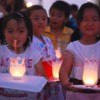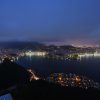2025.06.26 Yumi Honda +Qiaoxi Wang+ Momoe Nomura

We observed and recorded the nighttime light environment of the newly developed commercial complex Senkyaku Banrai in the Tokyo Bay Area and its surrounding public spaces (green plaza, station area, and Gururi Park). We conducted a multifaceted analysis, including the placement of lighting fixtures, illuminance, and the impression of the space, to determine how light affects the atmosphere of the facility and the city in the Toyosu area, which is being developed as a tourist hub.
The Toyosu area is a point of interest where the latest urban spaces and the lively atmosphere of shitamachi (old downtown) coexist due to redevelopment. We walked through the area around Toyosu Market Station, the green plaza, and Gururi Park, observing how light design impacts the impression, comfort, and safety of the town.
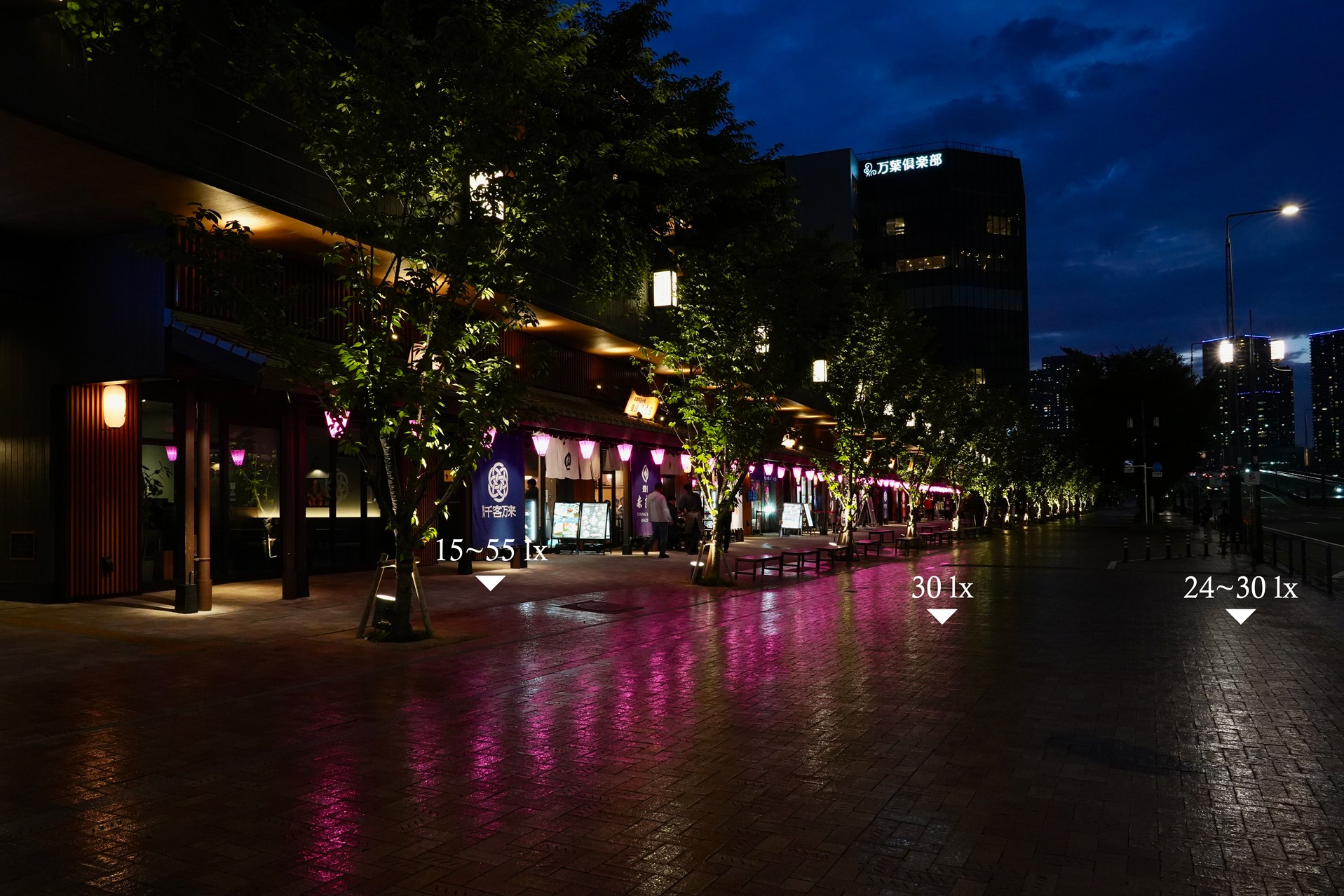
■Senkyaku Banrai
Senkyaku Banrai is a commercial facility that opened in 2024 next to the Toyosu Market. It’s a spot where both tourists and local residents can enjoy the array of restaurants and souvenir shops. Through architecture and lighting design incorporating traditional Japanese motifs, it exudes a uniquely Japanese warmth and vitality, even within the contemporary urban nightscape. The lighting plan inside the facility is unified, as befitting a new commercial complex, and was designed with both aesthetic appeal and functionality in mind. The main path lighting uses warm, incandescent colors, creating a nostalgic atmosphere reminiscent of a Showa-era shopping street. This fosters a welcoming atmosphere for visitors. The main facade featured a mix of diverse light sources, including chōchin, andon (traditional paper lanterns), eave lighting, and projecting signs. However, there was no excessive brightness, and the planned arrangement of lights created a pleasing sense of coherence.

However, some areas of lighting did not harmonize with the streetscape. Pink chōchin were hung in front of a shop. They clashed with the facility’s overall tone and the shop’s color scheme, and their presence was further emphasized by their reflection on the glass, creating a sense of discord with the surroundings. While this color choice might have been made with the cherry blossom season in mind, their harmony with the surroundings should be re-evaluated if they are to be permanent fixtures. Furthermore, the spotlights illuminating the street trees were very large, resulting in excessive light for the space. These lights, which stood out more than necessary, felt like an overdramatization rather than a function, and served as “light noise” that disrupted the space.
Despite the exterior being based on traditional Japanese design, the building did not feel like a “floating entity” even though it was surrounded by cutting-edge high-rise buildings. The softness of the lighting maintained visual harmony, making it blend in with its surroundings surprisingly well. Additionally, solar-powered andon were installed in the exterior on the second floor, demonstrating an attempt to balance environmental consideration with traditional design. These elements will have a significant impact on the urban lighting plan and can be evaluated positively from a sustainability standpoint.

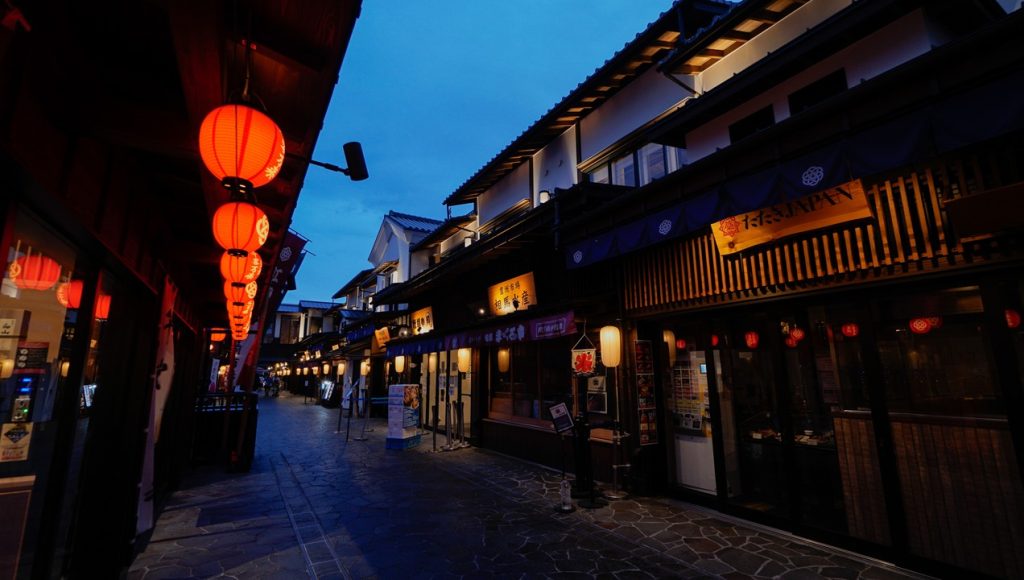
■Green Plaza
The Green Plaza, which is maintained on the rooftop of the Toyosu Market, is open until 11 p.m. and serves as a place of relaxation for local residents and market workers. Bollard lights and handrail lights, placed among the plantings and lawns, illuminated the plaza subtly yet effectively. The lighting was installed to blend into the landscape, softly encompassing the ground and the surroundings. By suppressing the dominance of artificial light and emphasizing continuity with natural light, a calm, subdued space was created. We highly rated the placement of the light fixtures within the Green Plaza because they did not obstruct the view and blended seamlessly with the planting and architecture.

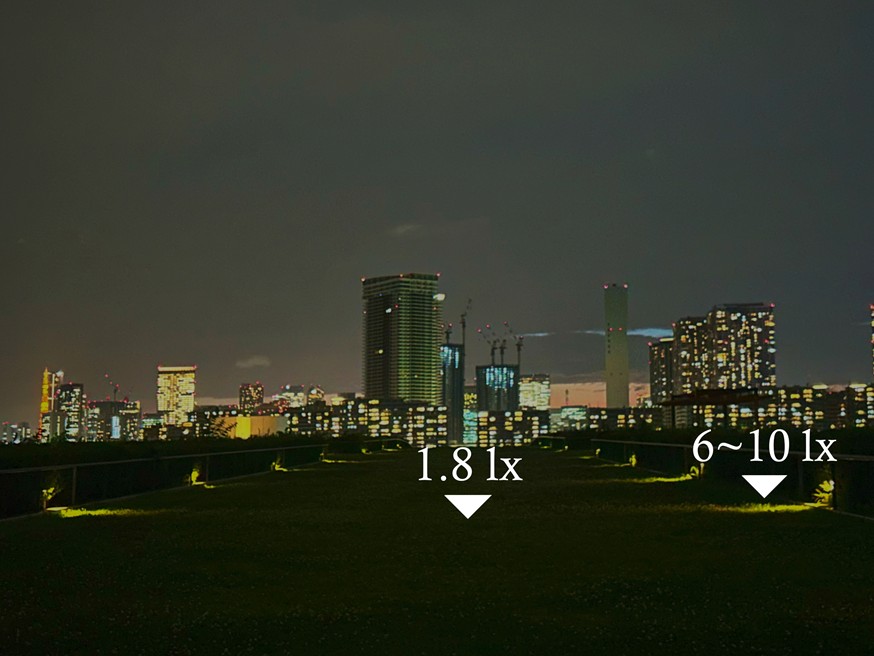
■The pedestrian bridge at Shijō-mae Station
In contrast to the Green Plaza, the pedestrian route from Senkyaku Banrai toward the station exhibited a problematic mix of lighting techniques. Specifically, the second-floor handrail lighting was designed such that its light source was directly visible from the first floor, resulting in noticeable and uncomfortable glare.
Furthermore, while the connecting passage incorporated white ceiling lights, spotlights aimed at the canopy, and footlights for path illumination, the spotlights were often directed toward the pathway itself. This orientation caused strong, unpleasant glare depending on the viewing angle. We feel that this particular aspect warrants significant improvement.



■Gururi Park and Seaside Area
On the route from the Green Plaza toward Gururi Park, the stair seating overlooking the Rainbow Bridge was impressive, but the staircase itself lacked lighting and had poor visibility. We noted safety concerns, especially at night, where the steps were difficult to see.
In addition, the glare from the lighting fixtures in the seaside tunnel space was significant, and we felt that improvement was necessary in both color rendering and glare control. In public spaces like this, lighting plans must aim to balance user visibility and comfort. This requires measures such as installing ground-level lighting to ensure the safety of steps and walkways, and selecting light sources that minimize glare.
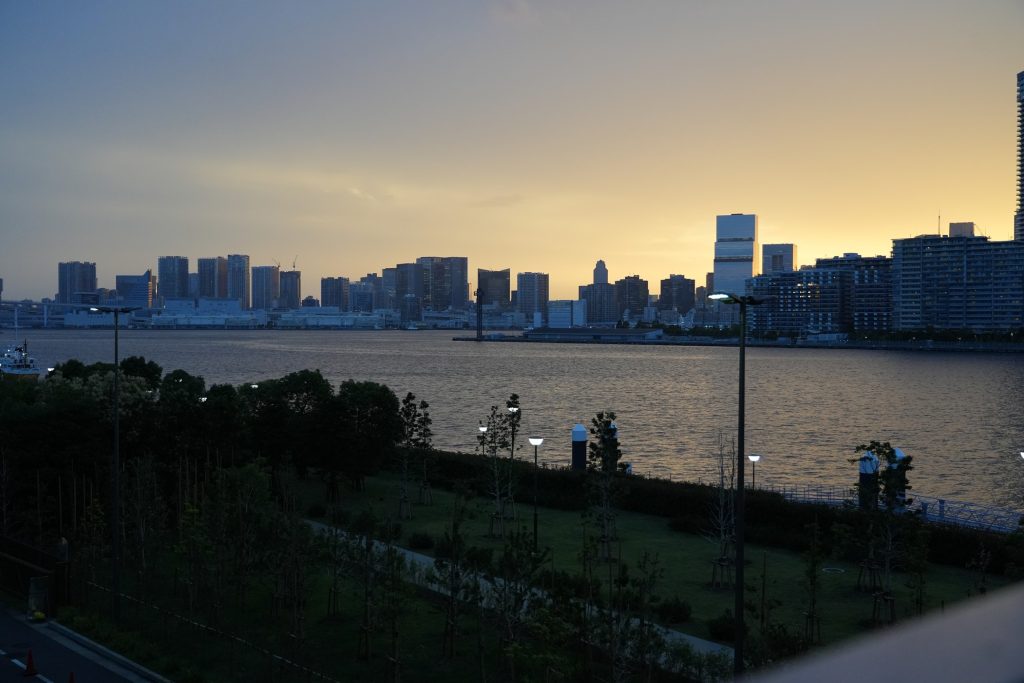
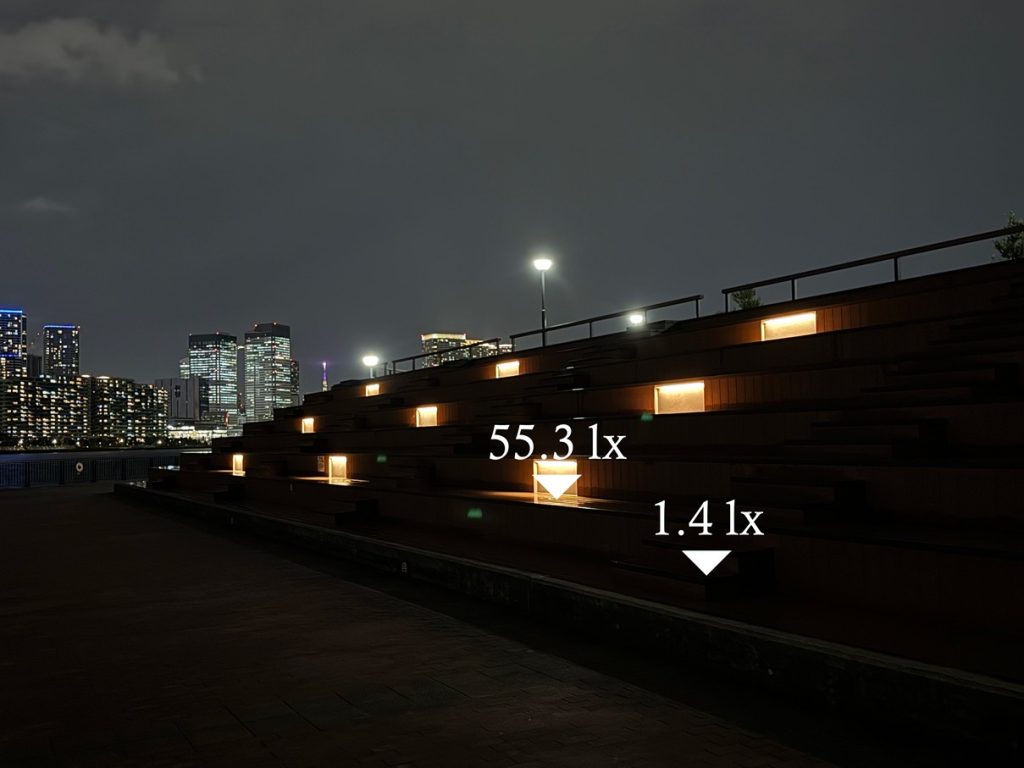

■Summary: Toyosu – An Urban Space of Light Maturing
This survey revealed that Senkyaku Banrai has been furnished with a lighting design that balances cultural individuality with a sense of unity, and the Green Plaza maintains a serene nightscape that respects nature. However, we also observed issues such as glare, inconsistency in color temperature, and safety concerns in areas where lighting had not been installed. To further improve the light environment, it will be necessary to balance visual comfort with the overall coherence of the streetscape.
In an urban space where various elements intersect, Toyosu appears to be continually seeking a new expression for Tokyo’s nighttime landscape. Lighting is a crucial element in the ever-evolving Toyosu, and it should remain a key focus in future design strategies. (Momoe Nomura)







